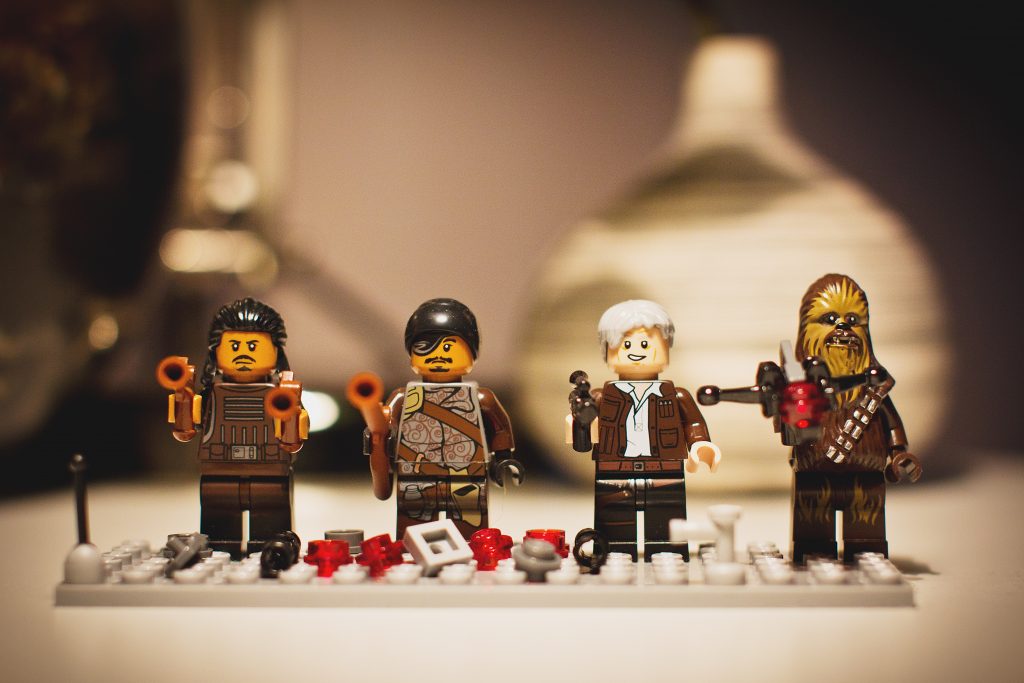It’s pretty much any morning at my kitchen table. The tea is strong, and there’s another politician on the Today programme. And you know what I’m thinking?
Get to the point.
They are stories without end — just an endless list of items.
And what happens?
I retune to Radio 2.
What’s this got to do with your content?
It’s very easy, particularly as a business owner, to get hung up on the features of what you do, or the service you offer. You want to make sure that someone knows absolutely everything about everything you do.
But it’s not enough.
You’ve got to give them the killer point. And get to it quick.
Here’s how.
And…But…Therefore
I’ve written before about the Star Wars story framework, how it has a place in your arsenal of storytelling. It’s perfect for the story of where your brand came from.
But when it comes to a blog post or an Instagram caption, it’s a bit too involved.
Therefore you need to learn to tell a whole story in 280 characters or three sentences, and bang, the likes start rolling in.
Or something like that. But don’t take my word for it.
From South Park to outer space
And/But/Therefore is not a new framework. If you Google it, then the name Randy Olson will come up. He’s the key proponent of it and talks about how the writer of South Park set him off down this route. Randy’s used it for complex science (he was a marine biologist I think), books and film scripts.
He shows it’s not his idea. Even Lincoln used it for the Gettysburg address; just it didn’t have a name. So it’s pretty well tested.
Why use And But Therefore
The simple reason? To make your life easier. It’ll make writing your content quicker, and it should distil your idea into a few sentences. Therefore it makes it easier for your customers to get, and engage with.
But it’s a discipline.
Therefore you’ve got to practice. You’ll probably hate doing the first few and feel a bit constrained. But stick with it, try it with customers and see what happens.
Look, if it was good enough for Lincoln, surely it’s worth a try?
What you need for a compelling ABT
No surprise that for a 3 part structure, you need three things:
- A lead character and their setting
- The challenges and conflicts that get thrown in the way of what they want to do
- A hero to ride to their rescue
Spoiler alert: you and your business are the heroes.
Who’s the story about and what’s going on?
This is where you set the scene. The who is your ideal customer, the person you’re aiming the content at. It works whether you’re direct to consumer or all about businesses.
If you need some help, I’m going to share Randy’s example of rewriting the Wizard of Oz into ABT (mainly because it’s hard to think of anyone that doesn’t know the story). So, Dorothy is a young girl living on a farm in Kansas, and her life is boring.
You can add several “and” statements to make the context clear, but I would say ideally no more than two — three at the most.
Remember, you’re focusing on the key elements, setting the story up.
What’s the challenge and conflict in their life?
Back to Dorothy: but one day a tornado sweeps her away to the land of Oz.
That’s a challenge. Unless you really don’t like Kansas.
What’s the challenge that your customer’s facing? Can you layer up the challenges, reflect the pain points in their life.
Here’s an example from me.
“Derek is an entrepreneur with multiple income streams and a small team and works irregular hours out of doors. But he cannot keep up with the changes in technology/this interwebby thing or work out how to promote his business when the market is shut. One of his team has GCEs but nothing that helpful to the business in his view.”
Most consumers have a tension in their life (desire to eat healthily versus the allure of chocolate, for example). That’s the pain point you’re pushing on.
Enter the hero to solve the problem
Now, Randy’s original narrative ends with “therefore Dorothy must undertake a journey to find her way home”. Which misses the vital role of Glinda the Good Witch to my mind. Any woman handing over red sparkly shoes to set me up for a journey is a hero in my book.
In the case of our erstwhile market trader, then it might be something like “therefore he needs the help of a business advisor such as XYZ to help guide him through the right decisions for a digital presence so he can get back to wheeler dealering down the market.”
Needs a bit of work but you’ll get the idea.
Don’t get hung up on the words
That’ll seem like an oxymoron. Just wanted to emphasise that you don’t need those actual words, but you want to be considering the structure as you work your way through what you’re trying to say.
It also doesn’t mean you can’t use them, but if you put everything out in that format, things will get stale, therefore losing you the engagement and reaction you were seeking.
Also remember it’s not the only format, and it’s not the right format for every occasion. But when you want to tell a complete story in a short amount of time, it works really well.
Try it, and see how it works for you. If you want more of the background from Randy, then I recommend his book “Houston, We Have a Narrative“.
Love to know how you get on, or what your thoughts are on this as a framework.






